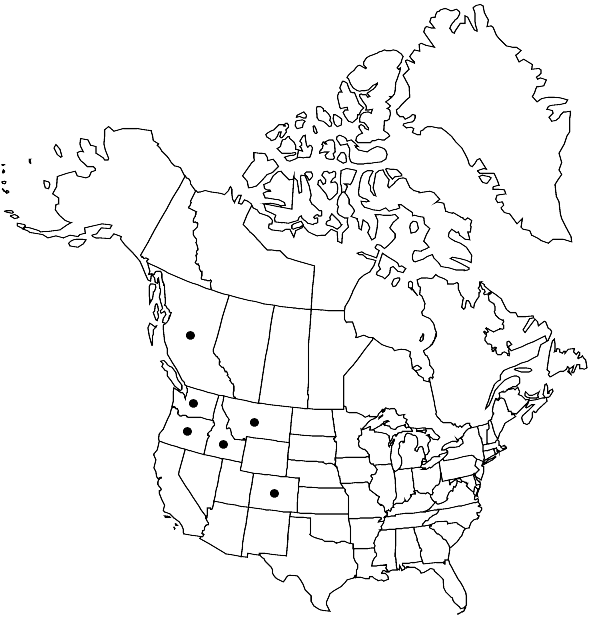Difference between revisions of "Didymodon vinealis var. rubiginosus"
Cryptog. Bryol. Lichénol. 2: 417. 1981,.
FNA>Volume Importer |
FNA>Volume Importer |
(No difference)
| |
Revision as of 21:55, 16 December 2019
Capsule with peristome absent; operculum narrowly conic, cells straight or nearly so.
Phenology: Capsules mature spring.
Habitat: Moderate elevations
Distribution

B.C., Colo., Idaho, Mont., Oreg., Wash.
Discussion
Although the gametophyte of var. rubiginosus is little variable, having short-lanceolate to triangular leaves, it is well within the range of variation of the typical variety. It has been said to differ in a very narrow distal lamina that is often fragile or notched, or by large distal laminal cells, or by quadrate proximal cells, but these characters are insufficient to distinguish sterile specimens. The sporophyte is required for accurate identification, with the absence (not mere fragility) of the peristome as the critical character, following the species concept of W. C. Steere (1938b); the nearly straight opercular cells are diagnostic. Forms of var. vinealis with weakly twisted opercular cells and weak, very fragile peristomes (e. g. California, Flowers 6561, COLO) may be taken as intermediates. B. H. Allen (1995) recently provided new American synonymy. The Mexican species Didymodon incrassatolimbatus Cardot should be looked for in the flora area; it differs by the broadly lanceolate, marginally 2-stratose leaves and well developed though short, red, erect peristome.
Selected References
None.